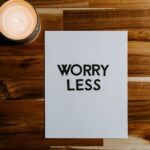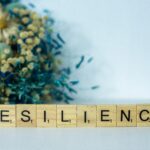Happy New Year!
With weeks of travel, events, and celebrations, the holiday season can be a busy whirlwind at work and in life. There’s a reason that gym memberships and juice cleanses are de rigueur in January!
You can jump start your financial health in the new year in the same way. The holidays are notoriously a time of overspending (gifts, travel, and entertainment can quickly add up), and just as you’re setting down the bubbly from toasting 2015, the credit card bills are coming due. If that thought has you reaching for your glass all over again, it might be time to take an honest financial look in the mirror and go on a debt diet.
The kind of fuel we put into our bodies affects how we feel every day and has long-lasting consequences – for good or bad—in years to come. In the same way, our daily money habits not only create our everyday financial reality, but are the foundation of the future. Are you building a strong one? Are you setting yourself up for a long life of financial health, or are you digging yourself into a hole with debt?
These aren’t necessarily easy questions to answer or face up to. So often, our problems with debt stem from much deeper things. The way we think about and handle our money ties into incredibly personal values and experiences. But you can think of it this way: the biggest debt you owe is to yourself. You deserve to cleanse your finances and create financial freedom. When you take control of your finances and stop the cycle of debt, you get to stop paying for your past and start building the future.
- Step 1. Look in the financial mirror.
If you’re having problems with debt, it’s time to take a good, clear look at the underlying reason why. Was there a big unexpected expense awhile ago that skewed you way off track? Is there an issue with impulse spending – and if so, what triggers the impulse? Is there a bigger overall problem like living beyond your means with basic expenses alone?
Your financial life is going to be nuanced and unique, like you are. This first step is getting to understand the root of the problem so that you can focus on what will be most effective for growing healthier habits in its place.
- Step 2. Make a plan.
If you have multiple debts, order them in terms of interest rates so that you tackle the highest-interest-rate debt first (of course, you need to keep paying at least the minimum on all your bills).
And a big hint about getting rid of debt: you can’t just pay the minimum balance. If you do that, the debt will simply keep snowballing because of interest. You’ll pay that debt three times over before you’re done. If you’re simply paying minimums as it is, chances are that you’ll need to adjust your spending to make room. A great way to start is with the 20-30-50 plan: apply this recipe to your take-home pay to gain a sense of a healthier, more balanced target.
- Step 3. Set yourself up for long-term financial success.
If you have no emergency savings set aside, then you risk going right back into debt if an unexpected expense occurs. As you destroy debt, you also need to build your emergency fund. Here’s how.
There’s a lot more to focus on in life than your money. Make things easy on yourself by automating your savings. (Just be sure to account for this so you never overdraw your account.)









